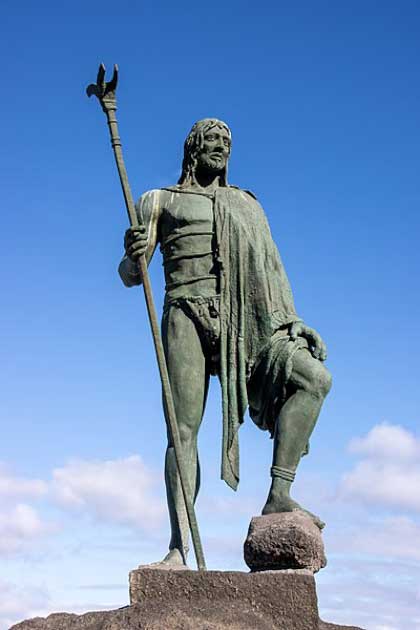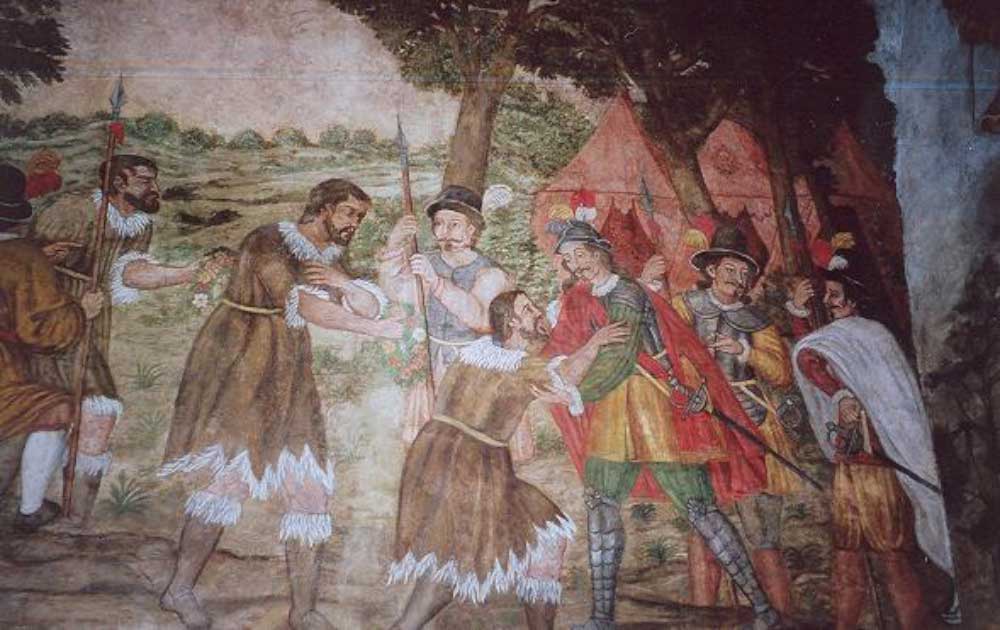Out to sea beyond Africa’s northwestern coast, the Canary Islands are for many sailors the last stop before they push out across the Atlantic. Isolated from the continental civilizations and free to develop their own way of life, these small islands saw the rise of a unique culture: the Guanches.
Who were these strange people, and what did they believe? What happened to them, and do any of their unique traits survive in the Canary Islands today?
Who were the Guanches?
The Guanches were the first known inhabitants of the Canary Islands. It is believed that this group of indigenous people came to the region during the first millennium BC. But as archaeologists uncovered evidence of this culture, it was not their artifacts or their ruins which first struck them. It was the size of the people.
The Guanches were apparently extremely tall for the time, especially the height of the male members of the race was typically between the range of five feet nine inches and six feet two inches. Some of them had blue eyes and blond hair, along with rosy skin. In addition to their unique appearance, they were broad and solidly built: they would have been extremely strong and quick at their feet.
But we don’t need to rely on the archaeology to tell us this. The Guanches were extant well into the 15th century, falling only with the final battles of the Spanish conquest of the islands in 1496. What happened to the Guanches has been referred to as “genocide”.

You saw it coming: these tall, aloof islanders of the Atlantic are another contender for Atlantis, although as with all such speculation this is largely guesswork based on a few similarities. However there is another intriguing link to mythology, this time Greek: there is some evidence which links these islands to the Isles of the Blessed.
The Isles of the Blessed form part of the afterlife in Greek mythology. While most people live uneventful lives and after death go to the misty, incorporeal Asphodel Meadows (and the really bad go to Tartarus), the heroes go to Elysium. Those who reach Elysium are granted another life, but if you reach Elysium three times you are sent to the Isles of the Blessed for all eternity.
More practically, the Guanches have also been linked to Egyptians as they followed the practice of mummification of their dead. The specific techniques that were used by them were very similar to that of ancient Egyptians. However, the exact origin of this light-skinned race is still considered to be a topic of debate for historians and archaeologists.
Several researchers believe that the race arrived in the Canary Islands by sea from north Africa. It is thought that the race shared a close relationship with the Berner tribes, who had occupied mainland North Africa for tens and hundreds of years.
The Guanches were known for their simple lifestyle, which helped them to thrive in challenging conditions. They led a semi-nomadic lifestyle and would typically live in the cave houses that they had carved into mountains.
The Spanish Conquest and the Genocide of the Guanches
We have no records which survive from the Guanches themselves apart from what can be found in the arid soils of the Canaries. All testament to these people, inhabitants of the “Fortunate Isles” comes from outside observers, and there is precious little to go on.
The Roman Pliny the Elder and the Greek Strabo both mention the islands, but give little detail as to the society on them, not even mentioning how many people there were. The Arab geographer Muhammad al-Idrisi, writing in 1150, talked of his encounter with a race of “flaxen haired” people in roughly the right location, but that’s it.
However their peaceful life was disturbed in 1402 with the arrival of the Spanish. Over the next century, the members of the race fought very hard against the foreign invaders to protect their land. In spite of giving their life and soul to the long and bloody fight, the indigenous population was defeated.
- Who Built the Temples of Malden Island, and Where did they Go?
- The Unknown Kings of Unclaimed Redonda: A Forgotten Lineage?
Due to the defeat, their unique culture and lifestyle was suppressed in the hands of the Spanish. After the colonization, many members of the race lost their lives due to diseases that arrived in their region along with the invaders. Some of the people were enslaved and sent to Spain.
The members of the race that remained ultimately adopted the lifestyle of the new rulers, and they blended with the Spanish population. Even though the Guanches gave a tough fight, they met a tragic end at the hands of the Spanish and became a lost culture.
A Lost Religion
One thing the Spanish conquest (and later archaeology) provided is some evidence of the religion of the Guanches, which appears to have pervaded their entire culture. They followed a polytheistic religion and it is believed that they accepted the existence of a higher power (whose name varied from island to island) and in the presence of demons.
The gods and goddesses that were worshipped by the people varied from one island to another. The inhabitants used pottery idols to represent their deities. They even adopted unique methods so that they could appease their gods and goddesses.
The people had a unique belief system when it came to religious and spiritual matters. They believed in the afterlife and the existence of the spirit. They had a sophisticated concept of the underworld, including their own versions of heaven and hell.

Even though most of their traces have been lost with the passage of time, the people of the race are still remembered for their courage in battle, their strikingly blonde or red hair, and their height. The end of the race is one of the most tragic events in the history of mankind.
Although the indigenous population played an instrumental role in shaping the history of the Canary Islands, it met its sad fate due to the invasion by the Spanish. However they have not been forgotten, and this strange extinct race of Atlantean giants live on in the DNA of the Spanish and their neighbors, the Berbers of north Africa.
Top Image: The Guanches showed noticeable differences in culture between the several islands of the Canaries. Source: Wouter Hagens / CC BY-SA 3.0.
By Bipin Dimri